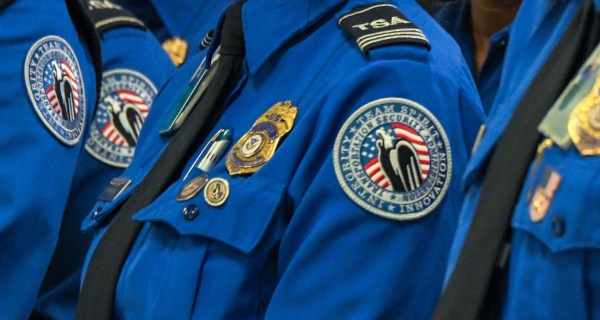Department of Homeland Security Science and Technology Directorate Deputy Under Secretary Daniel Gerstein testified last week before for a Senate Committee on Homeland Security and Governmental Affairs hearing titled “Biological Security: The Risk of Dual Use Research.”
Introduction
Good morning Chairman Lieberman, Ranking Member Collins, and distinguished members of the Committee. I thank you for this opportunity to testify today regarding the Department of Homeland Security (DHS) activities to address the security concerns raised by dual use life science research of concern (DURC). DURC is defined by the U.S. government as research conducted for legitimate purposes that, based on current understanding, might reasonably be anticipated to provide knowledge, information, products, or technologies that could be directly misapplied to pose a significant threat with broad potential consequences for public health and safety, agricultural crops and other plants, animals, the environment, or national security.
My testimony today will describe both DHS mechanisms for addressing and mitigating dual use concerns arising from intramural life science research activities that DHS funds and/or performs as well as DHS’s involvement in U.S. government and other efforts to address security concerns arising from life science research and technology development. It should be noted that DHS’s review process is very specific to its mission, and that the National Security Staff is overseeing a process to assess improvements and consistency in DURC policies across the entire Federal government. This has recently resulted in the creation of a United States Government Policy for Oversight of Life Sciences Dual Use Research of Concern policy released a month ago.
As we consider the DURC issue, several principles help to frame our thoughts. First, DURC is a complex issue for the scientific research and development community, balancing our Nation’s need to excel in science and exploration of robust technologies with ensuring our Nation’s security by preventing the misuse of such technology.” Second, almost all research conducted today in bioscience and biotechnology contains some degree of dual-use application, even if the research scope does not require DURC oversight. Third, addressing dual use concerns must be a shared responsibility, as research occurs at a variety of levels from the research funded by governments to research funded privately to experimentation done at institutions and by individual scientists. Finally, there are both international and domestic dimensions to DURC issue.
DHS Funded and/or Conducted Dual Use Research of Concern (DURC)
DHS performs research, some of which might be considered DURC, at several locations, including our internal laboratories such as the National Biological Analysis and Countermeasures Center (NBACC) and the Plum Island Animal Disease Center (PIADC). We also sponsor and collaborate with other departments including the Department of Defense’s (DoD) Defense Threat Reduction Agency (DTRA), Health and Human Services (HHS), United States Department of Agriculture, and the Department of Energy (DOE), including their laboratories such as the Sandia National Laboratories (SNL) and Lawrence Livermore National Laboratory (LLNL). Additionally, we also provide funding to colleges and universities, primarily through our DHS Centers of Excellence (COE) program. The first-rate, cutting edge scientific research and development ongoing in these efforts is crucial to DHS fulfilling its homeland security mission; they contribute to our understanding of threats and vulnerabilities, help guide development of detection and diagnostics tools, and lead to the development of standards for preparedness and response, as in the case of our “white powder” standard for response to screening and testing for a potential anthrax attack.1
DHS’s primary objective in funding technical activity in the life sciences is to meet our homeland security mission. We therefore exercise strong control of the information to avoid or deter misuse of critical information through non-publication or non-disclosure mechanisms. DHS routinely contracts for life science research that involves use of select agents and toxins, or that require special biosafety provisions; in all cases, we ensure that contracts contain clauses to ensure conformity with applicable laws, regulations, and internal policies. In addition, DHS contracts for life sciences research typically provide for the right for DHS to object to publication or disclosure. Further, depending on the type of proposed publication or disclosure, the information to be released must go through an internal review process including, but not limited to, review by the DHS Science and Technology (S&T) Offices of Security, Foreign Disclosure, and Corporate Communications. In the unlikely event that sensitive or classified information is produced from research projects funded through grants to academia, DHS requires grant recipients to create information protection plans which detail how this information would be identified and secured.
A foundational element of the internal DURC review process is the S&T’s Compliance Assurance Program Office, or CAPO, which reports directly to the Deputy Under Secretary of the S&T Directorate. The CAPO provides a multidimensional review of DHS’s research programs for compliance with treaties, laws, regulations, and policies regarding applicable arms control agreements, export control regulations, and requirements for biological select agents and toxins, biosafety and biosecurity, and animal care and use. S&T CAPO facilitates DHS’s management of DURC through a review and approval process which has evolved to include important best practices.
The process for identification and selection of a potential DURC program starts at the program manager level. DHS program managers propose a program of work to the leadership for review of the technical feasibility, impact, and potential benefits. DHS program managers are instructed about the applicable requirements inherent in their programs and provided with a checklist of areas with relevant points of contact within CAPO to facilitate the compliance process. For projects involving biological and/or chemical agents, data calls are held to make sure all project databases are current and that projects are being reviewed for DURC and other issues as appropriate. S&T leadership also reviews and approves these programs with support from the S&T CAPO, the Office of the General Counsel, the S&T Office of Security, and the S&T Privacy Office.
Research projects conducted or funded by DHS in the areas of biological and chemical defense undergo particular scrutiny and high-level Departmental review because of their potential to raise concerns regarding security, nonproliferation, and treaty compliance. After CAPO flags research for further review, approval is determined by the Department’s Compliance Review Group, or CRG, which is chaired by the DHS Deputy Secretary with participation of the Under Secretary for Science and Technology, the General Counsel, and the Assistant Secretary for Policy as permanent members and the Chief Medical Officer and the Under Secretary for Intelligence and Analysis as advisory members. This review ensures compliance with the Chemical Weapons Convention (CWC) and the Biological and Toxin Weapons Convention (BWC).
In preparing for the meeting of the CRG, each project is reviewed in the context of its use of select agents and toxins and as well as the National Science Advisory Board for Biosecurity (NSABB)’s definition of Dual Use Research of Concern (colloquially known as the NSABB Seven Experiments of Concern). Of note, these same criteria have been identified for use in the new U.S. government DURC policy. In reviewing the projects, the CAPO divides potential projects into three tiers based whether they include any NSABB “experiments of concern,” raise perceptions of noncompliance with arms control agreements, utilize select agents or toxins, have the potential to generate or reveal critical national security vulnerabilities, or enable information on agent production or dissemination. Any research scope modifications proposed after initial authorization are reviewed and must be reauthorized. Biological and chemical research defense projects that involve experiments of concern that have not been reviewed and authorized by DHS leadership, may not be initiated or conducted.
For internal DURC compliance, the CAPO has established management controls employing compliance, classification and export control reviews. Compliance reviews at laboratories serve to ensure DHS biological research conforms to applicable biosafety and biosecurity regulations and guidance. This assurance is achieved through collecting relevant facility and project level documentation, conducting site visits, and performing laboratory inspections in accordance with a Memorandum of Understanding between DHS, the Centers for Disease Control and Prevention (CDC), and the Department of Agriculture Animal and Plant Health Inspection Service (USDA APHIS).
The Classification Review Panel, or CRP, ensures compliance with relevant classification authorities. Projects identified through the compliance process as raising potential need for classification are subject to review by the CRP. The CRP is co-chaired by the Director of Security at S&T and the S&T Compliance Assurance Program Manager and is attended by DHS technical subject matter experts, security experts, and legal counsel. The CRP uses the “Chemical and Biological Defense Security Classification Guide” of October 2010, which articulates with specific levels of classification and controlled unclassified protections, in making recommendations to the Under Secretary for Science and Technology regarding whether classification is required.
The S&T Export Control Group conducts reviews to ensure compliance with all applicable export control laws and regulations and seeks licenses as appropriate for any DHS exports or imports, especially those in support of international cooperative research activities.
DHS also employs internal controls to confront insider concerns. Biorisk management is an important part of managing the DURC issue. The elements of our biorisk management include biosafety, biosecurity and bioethics. Additionally, DHS personnel are provided with annual security and counterintelligence training, including training on insider threats. DHS also monitors researcher access to DHS facilities and sensitive information technology systems through security clearances and personnel suitability screening to manage levels of access to these facilities and sensitive technology systems.
A variety of different legal instruments are available to government agencies to fund research. DHS selects the best instrument for achieving desired research results and tailors it to specifically address issues such as mission requirements, information security, deliverables, and government control of the research activity. As an example, since grants in general do not afford the government much control over how research is performed, DHS includes non-standard grant terms in its research grants and cooperative agreements to capture any unintended security vulnerabilities created during the research. These terms require grant recipients to immediately notify DHS if sensitive information or products are created or discovered during the course of research. DHS generally does not provide grant recipients sensitive information (i.e., information that is deemed “for official use only”) and only uses grants to fund those projects that are appropriate to the level of government oversight and control that grants provide. In the rare circumstance where DHS does provide sensitive information to performers under grants or cooperative agreements, performers are bound by non-disclosure provisions. Research that requires more stringent government oversight and direction than a grant can provide is typically conducted pursuant to a contract.
It is essential for accomplishing the DHS mission to stay at the forefront of science and technology development to support biosecurity. In some case, this entails maintaining active engagement with international researchers and U.S. academic research institutions that draw on the world’s brightest students and researchers. DHS weighs the need for government oversight and control in determining which activities should be performed in government laboratories and which ones are appropriately done in academic settings or with international partners.
1 Two voluntary consensus standards published in Oct 2010 by ASTM International provide guidance for initial response to suspected biothreats and a standard sample collection method (E2770-10 and E2458-10, respectively).
DHS Active in DURC Issues Across the Federal Government
As the National Academy of Sciences recognized in its landmark 2004 study Biotechnology Research in an Age of Terrorism, dual use life science research issues affect the entire life science enterprise. Therefore, in addition to addressing dual use concerns in its own activities, as described above, DHS is an active participant in a “whole-of-government” approach to address dual use concerns more broadly. The Department addresses aspects of this problem that are beyond its direct control through a number of mechanisms. This is an area in which policy is still developing, and to which DHS is strongly contributing.
This approach is predicated on the recognition that life science research and technology development is essential to meet national objectives in public health, economic development, environmental protection, and quality of life, as well as national and homeland security. The source of the dual use dilemma is that legitimate and illicit applications of the life sciences both draw on the same science and technology, making it inherently difficult to counter one without interfering with the other. Although the United States is a leader in world life science research, we do not monopolize it. Furthermore, we will be effective at addressing dual use research risks worldwide only to the extent that we can help develop a shared understanding of the risks. After the publication of the National Academy’s 2004 study, the U.S. government created the National Science Advisory Board for Biosecurity to “provide advice on and recommend specific strategies for the efficient and effective oversight of federally conducted or supported dual use biological research.” The NSABB reports to the Secretary of Health and Human Services, whose department funds the vast majority of U.S. life science research, but its purview is life science research government-wide.
NSABB is strictly an advisory board, with no policymaking or regulatory authority, and its voting members are all nongovernmental. However, it also has ex officio members from across the U.S. government, including DHS. The DHS ex officio member of the NSABB contributes a departmental perspective to these discussions, one that emphasizes the importance of scientific research to meeting DHS’s mission, and the consideration of dual use concerns.
DHS is also an active participant in the formulation of U.S. government policy on dual use research, such as was issued on March 29. We pay attention not only to those aspects that directly affect DHS operations, but also to the effect such policies have on mitigating dual use risks more widely as the government seeks to provide security from malicious dual use of research while at the same time allowing for the open and unfettered innovation by our nation’s scientists and laboratories.
Dual use research is one of the tenets of the National Strategy for Countering Biological Threats, published by the White House in late 2009, which recognized the importance of encouraging alignment of “global attitudes against the intentional misuse of the life sciences or derivative materials, techniques, or expertise to harm people, agriculture, or other critical resources.” The strategy is targeted to reduce biological threats by: (1) improving global access to the life sciences to combat infectious disease regardless of its cause; (2) establishing and reinforcing norms against the misuse of the life sciences; and (3) instituting a suite of coordinated activities that collectively will help influence, identify, inhibit, and/or interdict those who seek to misuse the life sciences. The strategy requires the annual submission of interagency contributions towards meeting this goal.
As part of supporting the broader DURC process, DHS has also engaged in external efforts to improve the management of dual use issues. Recognizing the importance of responsible life sciences both here in the United States and globally, DHS has supported visits – foreign and domestic – to our laboratory facilities as well as to discuss our compliance program. At the recent Biological and Toxin Weapons Convention (BWC) – the international treaty banning the development of biological weapons – review conference held in Geneva in December 2011, DHS briefed international delegations, scientific community representatives, members of nongovernmental organizations, and representatives of other international organizations about United States biodefense activities with an emphasis on development of national laws and controls, the importance of conducting sound scientific research, and doing so in a responsible manner.
Even with the kind of internal oversight policies described previously and the U.S. government-wide policy on oversight of U.S. funded life sciences research, DHS believes that responsibility for addressing security concerns related to DURC must be shared. The international nature of life sciences coupled with the explosion in life science research and biotechnology development that is funded by private sources means that much of the DURC being conducted is not under direct U.S. government control. Advances in the life sciences are going to inexorably create powerful technological capabilities which will be of tremendous benefit to humankind, but will also require careful stewardship including development of appropriate national laws, regulations and policies as well as continued emphasis on strong biorisk management programs that emphasize standards for biosafety, biosecurity and bioethics. Ultimately, we strongly recommend the international life science community appreciate the DURC problem and internalize these concerns while developing and conducting research.
Conclusion
Mr. Chairman and members of the Committee, I am pleased to have been able to review with you the Department of Homeland Security’s interest and involvement in the review and oversight of dual use life science research of concern.
We greatly depend on the U.S. life science enterprise – one that is open to the world’s best students and researchers – to help develop solutions to homeland security needs. We appreciate the importance to our own mission – and to other national objectives – that scientific research be conducted in the way science works best – with the widest possible engagement of researchers and open publication of research results.
We support, and are implementing, the U.S. government’s March 29 policy to consider the dual use implications of federally funded research before it is conducted, and we will be part of the process of developing additional policy that will help research institutions address these concerns.
Ultimately, we recognize that these are issues that affect the global scientific community as a whole, much of which the U.S. government has no direct control over. We are pleased to be able to offer our own procedures as one set of best practices for dealing with this issue, recognizing that our model will not necessarily be applicable in other situations. We will continue working as a Department and as a government on how to address and mitigate the risks of dual use research while ensuring that the Department, the United States, and the world continue to harness or leverage its benefits.





